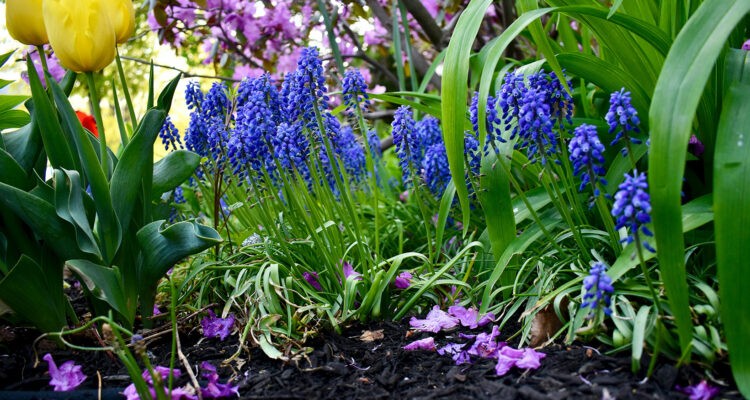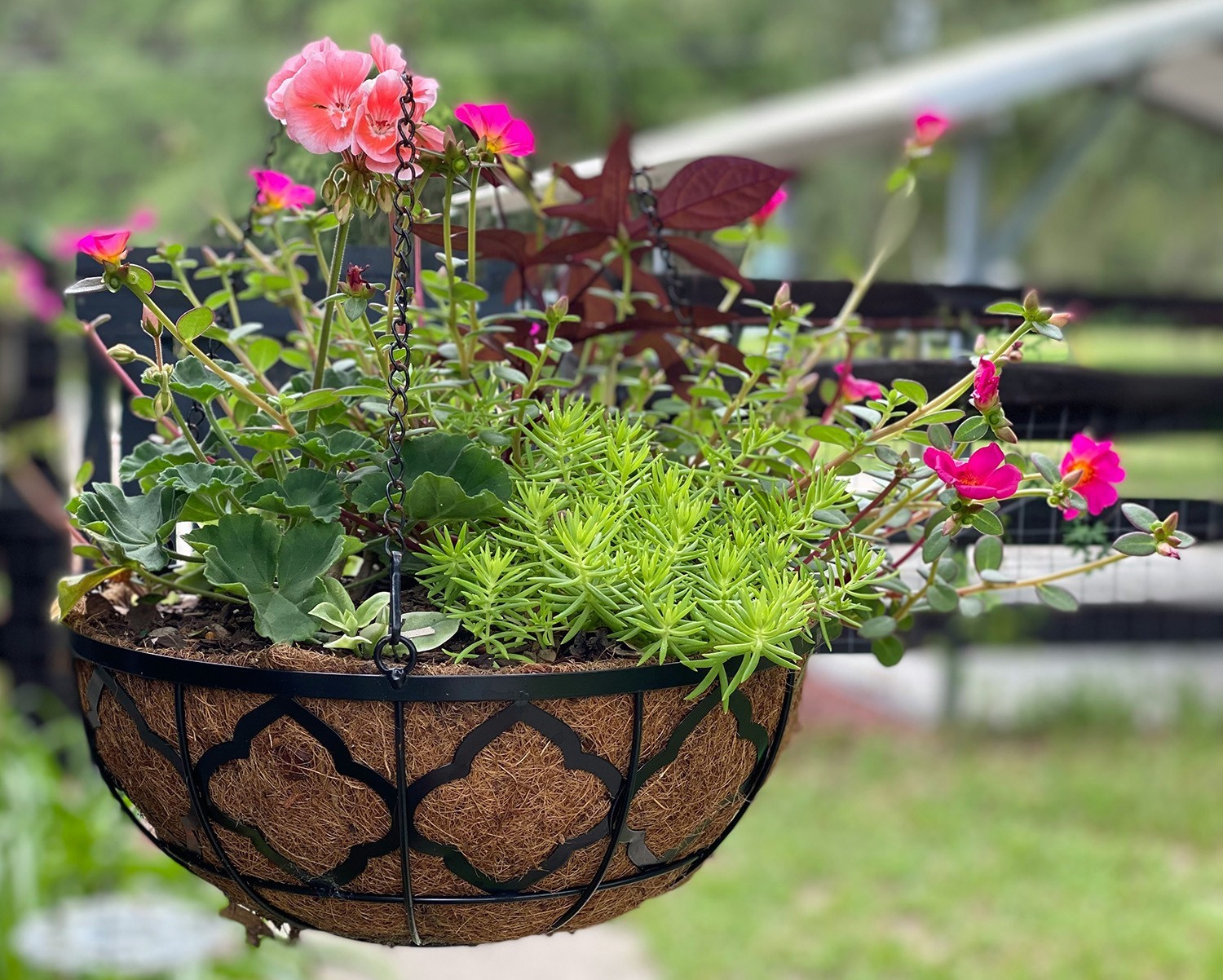To have the yard of our dreams, it needs nourishment from us and Mother Nature.
Story by Judy Goppert
When you have the knowledge and experience to grow anything, it comes in handy. That is what Markis Hill, Horticulture Extension Agent with K-State Research and Extension in Johnson County has. A true garden guru; there is nothing he can’t keep growing. Which comes in handy when you oversee 540 Master Gardener volunteers!
Originally from San Diego, California, he was about 10 years old when his mother moved him to Eudora, Kansas. “My family lives in central Kansas, and I enjoyed visiting their farm growing up. It wasn’t until I finished two years at a community college that I got into landscaping, doing odd jobs around town,” he shared. “A family friend said come landscape my yard. I did her yard, and she posted on Facebook, and everybody wanted me to do their yards! I didn’t really know what I was doing when giving recommendations for planting and such, so I did some research and found horticulture.”
Markis ventured onto K-State, where he furthered his knowledge and gained more hands-on experience, becoming involved in the horticulture program, working in campus greenhouses, and volunteering for garden activities. This gardening passion led him to apply for his current position, where he started last June.
As we’re well into Spring, the flowers, shrubs, trees, and grass are awakening in our yards. We turned to Markis for tips and tricks to create a beautiful outdoor space.
His first tip, simply get out and connect with your gardening area. Do some exploring, check for perennials that are reemerging, weeds popping up overnight, and insect life that may be happening. Look for what areas are calling to be filled with blooms or greenery.
“This will influence what you want to plant and where,” Markis stated. “As for the other tangible things, I’d say plant annuals for color. During May and June, you can still get away with a couple of annuals, May being the most ideal planting time,” he continued.
When it comes to plush hanging baskets and potted flowers, he emphasizes that water is the key. “If you have one, you are going to have to keep it watered; if it dries out, it becomes hydrophobic,” cautioned Markis. “If the soil is hydrophobic, you need a wetting agent or soak the pot for the water to be taken up by the soil. I have noticed if you have a coir liner, chickadees and tufted tit mice birds take bits and pieces of it to use for their nest.”
“It’s also a good time to prune and trim flowers and shrubs, such as forsythia, lilacs, dogwoods, and magnolias. If you need to do a rejuvenation on shrubs, this would be an ideal time to do it after they finish flowering. I also recommend lifting and dividing perennials,” he shared.
While roses are a garden favorite for their abundance of enticing scented blooms, they are also quite the favorite of Japanese beetles. Watch for their emergence in June. If you set a pheromone trap in your garden, you are sending a message to them to have a buffet, shared Markis, suggesting traps are placed away from your garden plants. It’s also time to scout for bagworms, as they are a serious issue affecting junipers and cedar trees.
To have a thick green lawn, it is imperative to stay on top of weeding. Markis emphasized, “In late May into June comes the immersion of summer annuals like crab grass and prominent weeds. Getting them while they are small is easier than when they become giant plants.”
“Especially in June, we see the growth of warm season grasses, including Bermuda, Zoysia, and Buffalo grasses,” he continued. “I recommend aerating the lawn and applying a nitrogen-based fertilizer since this is the time they are actively growing.”
One of the largest and prized possessions in our yards are the trees and shrubs. They, too, need some extra care. When it comes to trimming trees or letting them bloom, Markis says to prune for control of size and shape. If you have shrub hedges, this is a good time to shear them for a uniform shape and help them maintain an air flow.
Shade or sunny areas dictate different care, Markis shared. “For sunny areas with trees and shrubs, mulching is important as it cools the soil, retains moisture, and keeps the weeds out. Then, in sunny areas when summer moves on, I would space out watering. You sort of want the plant to have an acute wilting period where leaves are pointed down before you put water on them. It helps it prepare for the drought conditions we have in late summer.”
“Remember, if you plant in shade caused by trees, the soil is going to be dry,” reminded Markis. Tree roots compete for moisture, leading to a depletion of water and nutrients. One might look at native plants that can tolerate a range of soil conditions. More information on native plants can be found at www.johnson.k-state.edu/programs/natural-resources/native-plants/
Now is a good time to make soil amendments, Markis recommends. Getting your soil tested will measure soil pH and available nutrients in the soil, providing you accurate information about the type and amount of fertilizer or amendment to apply to maintain good plant health.
What is his personal plant life like? “I have a lot of my experience in talking with people. My wife and I participate in the Bonner Springs Farmer’s Market where we sell houseplants that we grow. My collection went from two to almost 1,000! We have a grow-tent in our basement where we keep the ones that need light all year.”
Markis encourages gardeners to call the gardening hotline where Master Gardeners field questions from the public. They can be reached at 913-715-7050, or email garden.help@jocogov.org.









